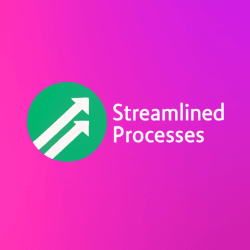For Business Operations Streamlining, see our main page here.
Why Efficiency Matters in Today’s Business Environment
Businesses today face unprecedented pressure to operate faster, cheaper, and smarter. Competition is fierce, customer demands evolve quickly, and technology moves even faster. As a result, operational efficiency isn’t just a nice-to-have—it’s essential for long-term survival.
Business Operations Streamlining helps companies reduce waste, eliminate delays, and optimize how resources are used. For example, a retail company that once used manual order tracking saw a 40% improvement in fulfillment time after automating the process. This not only boosted customer satisfaction but cut overtime costs significantly.
Moreover, streamlined operations lead to better forecasting, fewer errors, and improved team morale. Employees spend less time on repetitive tasks and more on valuable work. As the saying goes—work smarter, not harder.
Business Operations Streamlining: Core Areas to Focus On
Understanding where and how to streamline takes insight and strategy. There are key areas where most businesses can find immediate gains.
- Workflow Automation: Tools like Zapier or Monday.com can automate repetitive steps and improve team collaboration.
- Standard Operating Procedures (SOPs): Clear, documented processes reduce confusion and speed up training.
- Technology Integration: Linking CRM, ERP, and communication platforms ensures data flows smoothly between departments.
- Supply Chain Management: Optimizing inventory levels and vendor communication reduces costs and supports faster delivery.
Each of these areas contributes to better performance and reduced friction. For example, streamlining procurement through automation allowed one manufacturer to cut purchasing cycle times in half while maintaining quality control standards.
Technology’s Role in Business Operations Streamlining
Technology is at the heart of most modern streamlining efforts. Cloud platforms, AI-backed analytics, and robotic process automation (RPA) are more accessible than ever. These tools help organizations identify bottlenecks, forecast needs, and even make real-time decisions.
Consider a logistics company using AI to predict demand and adjust shipping schedules before issues arise. They not only avoided stockouts but also reduced freight costs by 20%. Similarly, AI-driven chatbots now handle common customer queries, freeing up human reps to solve complex issues.
But technology is only effective when paired with good planning and training. Without proper onboarding and clear expectations, tech investments often go underused.
Choosing the Right Method for Streamlining
Not every approach works for every business. The right method depends on factors like size, team structure, and industry. Here’s how to evaluate options:
- Map Current Processes: Understand where time is lost and where steps overlap.
- Involve Teams: Employees working within the system often know where the friction lies.
- Prioritize Impact: Aim first at changes that will yield the biggest results with minimal risk.
- Test Changes Gradually: Implement in stages and measure improvements along the way.
Many companies start with Lean principles or Six Sigma methodology. These popular frameworks focus on minimizing waste and enhancing quality. However, smaller organizations may find simple workflow audits just as powerful, especially when paired with agile project management tactics.
Employee Involvement in Business Operations Streamlining
Involving employees in streamlining initiatives builds stronger buy-in and leads to better outcomes. Most importantly, team members often spot issues that leadership may overlook.
For example, when a healthcare provider involved nurses in redesigning patient intake procedures, wait times dropped by 30% in less than three months. The staff felt heard, patients were happier, and overall efficiency increased.
Inclusivity in process redesign also boosts morale and lowers resistance to change. Workers are more likely to adopt new systems when they helped create them.
Real-World Case Study: From Chaos to Clarity
A growing SaaS company faced chronic delays in client onboarding. Different teams used disconnected tools, leading to miscommunication and repeated tasks. After a full Business Operations Streamlining effort, they consolidated systems, automated handoffs, and created unified dashboards.
The outcome? Onboarding time dropped from six weeks to ten days. Meanwhile, client satisfaction went up by 25%. This didn’t require a massive budget—just focused analysis and smart execution.
Common Mistakes When Streamlining Operations
While the rewards are great, doing it wrong can backfire. Here are common pitfalls:
- Ignoring Team Input: Top-down changes often miss root causes and lower staff morale.
- Over-Automation: Replacing every human touchpoint is risky, especially in customer-facing roles.
- Lack of Follow-Up: Without tracking results, it’s hard to know if changes are working.
- Failure to Scale: A solution that works for 20 people might break at 100 if not designed to grow.
To avoid these issues, companies should monitor metrics, keep speaking with staff, and adapt strategies as needed.
FAQ: Business Operations Streamlining Explained
What is Business Operations Streamlining?
It refers to identifying and improving inefficient business processes to save time, reduce costs, and improve performance.
How long does it take to see results?
Improvements can appear in weeks with minor changes, while larger efforts may take months to show full impact.
Can small businesses benefit too?
Absolutely. Even solo entrepreneurs can streamline invoicing, scheduling, or customer service using simple tools.
What tools support streamlining efforts?
Popular ones include Trello, Asana, HubSpot, Zapier, and Microsoft Power Automate, depending on your needs.
The Future of Operational Excellence
Looking ahead, the demand for agility and speed will only grow. Business Operations Streamlining will become a strategic advantage, not just an operational one.
More companies will embrace AI, data-driven processes, and continuous improvement as the new standard. So, whether you’re a startup or enterprise, it’s clear—streamlining is not a phase; it’s the future.
This article was created with the assistance of AI tools and reviewed by our team at Streamlined Processes LLC to ensure accuracy and relevance.
Follow us on Facebook here.

